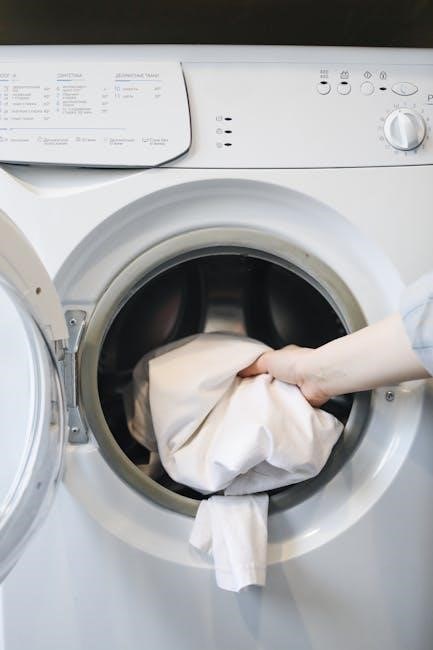
Manual airbrush techniques involve using a device to spray paint, with
definition
and purpose being key to successful application, allowing for precise control and creative expression always with great results online.
Definition and Purpose
A manual airbrush is a device used to spray paint or ink, allowing for precise control and creative expression. The definition of a manual airbrush is a handheld tool that uses compressed air to atomize paint, creating a smooth and consistent finish. The purpose of a manual airbrush is to provide artists and crafters with a versatile tool for achieving detailed and intricate designs. With a manual airbrush, users can create a wide range of effects, from fine lines and details to broad strokes and backgrounds. The manual airbrush is commonly used in various art forms, including painting, illustration, and graphic design. It is also used in industrial and commercial applications, such as model making, toy production, and textile design. Overall, the manual airbrush is a valuable tool for anyone looking to add precision and creativity to their work. Its definition and purpose are closely tied to its ability to deliver high-quality results.
History and Development
The history of the manual airbrush dates back to the late 19th century, when it was first invented by Abner Peeler, an American artist and inventor. The early airbrushes were simple devices that used a bulb or a pump to force air through a small nozzle, creating a fine spray of paint. Over the years, the design and functionality of the airbrush have evolved significantly, with the introduction of new materials and technologies. The development of the manual airbrush has been shaped by the needs of artists, crafters, and industrial users, who have driven innovation and improvement in the tool. Today, the manual airbrush is a sophisticated instrument that offers a high level of precision and control, making it an essential tool for a wide range of applications. The history and development of the manual airbrush are a testament to human ingenuity and the desire to create and innovate.

Basic Airbrush Techniques
Learning basic techniques is essential for mastering the manual airbrush with online tutorials and guides always available for beginners to practice and improve their skills slowly.
Dagger Strokes and Script Writing
To master the manual airbrush, one must learn dagger strokes and script writing, which involve creating lines and curves with precision and control, allowing for beautiful and intricate designs to be produced.
The dagger stroke is a fundamental technique used in script writing, where the airbrush is moved in a smooth, flowing motion to create lines and curves.
With practice, the dagger stroke can be mastered, enabling the creation of stunning scripts and designs.
The key to successful dagger strokes and script writing is to use the correct air pressure and paint flow, which can be achieved by adjusting the airbrush settings and using the right type of paint.
By mastering the dagger stroke and script writing techniques, artists can unlock a world of creative possibilities with the manual airbrush, producing exquisite and detailed work that showcases their skill and craftsmanship.
The Internet provides numerous tutorials and guides on mastering dagger strokes and script writing with the manual airbrush, making it easier for beginners to learn and improve their skills.
Circular Dots and Basic Shapes

The manual airbrush is capable of producing a wide range of circular dots and basic shapes, which are essential elements in various art forms and designs.
These shapes can be used to create intricate patterns, textures, and compositions, adding depth and visual interest to artwork.
The airbrush’s ability to produce smooth, rounded edges and precise lines makes it an ideal tool for creating circular dots and basic shapes.
By adjusting the air pressure and paint flow, artists can control the size and shape of the dots and shapes, allowing for a high degree of precision and accuracy.
The Internet offers numerous tutorials and guides on creating circular dots and basic shapes with the manual airbrush, providing artists with the skills and techniques needed to master these fundamental elements.
With practice and patience, artists can use the manual airbrush to create stunning circular dots and basic shapes, unlocking a world of creative possibilities and taking their artwork to new heights of excellence and sophistication always.

Airbrush Maintenance and Cleaning
Regular cleaning and maintenance of the airbrush is crucial for optimal performance and longevity, using proper techniques and materials always ensures great results online every time.
Importance of Regular Cleaning
Regular cleaning of the airbrush is essential to prevent clogging and maintain its performance, ensuring a smooth and even flow of paint. The airbrush should be cleaned after each use, and the frequency of cleaning depends on the usage and type of paint used. A clean airbrush is crucial for achieving professional-looking results, and neglecting to clean it can lead to damaged parts and poor performance. The cleaning process involves removing excess paint, disassembling the airbrush, and using cleaning solutions to remove dried paint and debris. By following a regular cleaning routine, artists can extend the life of their airbrush, prevent maintenance issues, and ensure optimal performance. This is especially important for artists who use their airbrush frequently, as regular cleaning can help prevent the buildup of paint and debris. Proper cleaning techniques and materials are available online, making it easy for artists to keep their airbrush in good condition. Regular cleaning is a simple yet crucial step in maintaining the quality and performance of the airbrush.
Cleaning Accessories and Materials
Cleaning accessories and materials are essential for maintaining the airbrush, and various options are available online. A set of pipe-cleaner brushes can be used to clean hard-to-reach areas, while a nozzle cleaner can help remove dried paint and debris from the airbrush nozzle. A cleaning pot is also necessary for soaking and cleaning the airbrush parts. Additionally, cleaning solutions and thinners can be used to remove paint and grime from the airbrush. It is recommended to use a soft cloth and gentle cleaning solutions to avoid damaging the airbrush parts. The choice of cleaning materials depends on the type of paint used and the level of cleaning required. By using the right cleaning accessories and materials, artists can keep their airbrush in good condition and ensure optimal performance. Regular cleaning with the right materials can help prevent clogging and maintain the airbrush’s performance, making it a crucial part of the airbrush maintenance routine. Proper cleaning materials can be found online, making it easy to keep the airbrush clean and well-maintained.

Airbrush Essentials and Tips
Mastering airbrush techniques requires practice and patience with online resources available always helping artists.
Dilution and Paint Consistency
Effectively using a manual airbrush primarily involves mastering paint dilution and consistency, which is crucial for achieving the desired effect. The paint should be thinned to the right consistency, allowing for smooth and even application. This can be achieved by using a thinner specifically designed for airbrush paints, as water can be too harsh and may damage the paint or the airbrush. The ideal consistency is usually achieved when the paint flows smoothly and evenly through the airbrush, without being too thick or too thin. A good starting point is to mix one part paint with one part thinner, and then adjust to achieve the desired consistency. It is also important to note that different types of paint may require different thinning ratios, so it is essential to consult the manufacturer’s instructions. By mastering paint dilution and consistency, artists can unlock the full potential of their manual airbrush and achieve professional-looking results.
Tips and Tricks for Beginners
For those new to manual airbrushing, there are several tips and tricks to keep in mind. One of the most important is to practice, practice, practice, as this will help develop the necessary skills and techniques. It is also essential to start with simple exercises, such as creating lines and shapes, before moving on to more complex projects. Additionally, it is crucial to choose the right airbrush and paint for the job, as this will affect the overall quality of the work. Many online resources and tutorials are available to help beginners get started, and it is recommended to take advantage of these to learn new techniques and gain confidence. By following these tips and tricks, beginners can quickly improve their skills and become proficient in using a manual airbrush to create stunning works of art. With patience and dedication, anyone can master the art of manual airbrushing and achieve professional-looking results.